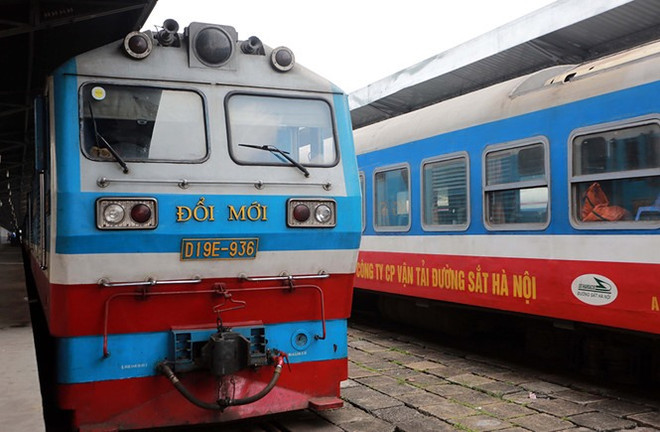 The replacement of 1,000 train coaches will create a huge waste to VNR, experts suggested. (Photo: thanhnien.vn)
The replacement of 1,000 train coaches will create a huge waste to VNR, experts suggested. (Photo: thanhnien.vn)
Hanoi (VNS/VNA) - Vietnam Railways (VNR) is attempting to replace morethan 1,000 train locomotives and coaches, but experts said the money would bebetter spent elsewhere.
The new Law of Railwayregulates the lifespan of a locomotive and a coach is 40 years and for afreight car coach, it is 45 years.
Nguyen Le Ninh, a memberof the Council of Scientific, Technical and environmental Consultancy under theHCM City Fatherland Front told Thanh nien (Young People)newspaper that a lifespan was not necessary to decide the operational abilityof any locomotive, coach or freight car.
Just like cars or othervehicles, locomotives and coaches can still run properly after a regulatedexpiration date.
Also, not alllocomotives and coaches are frequently in use and good maintenance can increasetheir lifespan.
Among those 1,000expired locomotives and coaches, some are still usable. The job of VNR,according to Ninh, is to evaluate, choose, dismantle and reassemble good onesfor further use.
“To measure theoperation time of a coach, operation distance should be used. In theory, VNR isin charge of recording the information. However, due to their neglect, theycannot track how long a coach has been used,” he said.
Nguyen Minh Khue, formerdeputy head of Vietnam Railway Authority, said some coaches left from theFrench colonial era (pre 1954) which are in good condition could still be used.
Therefore, operationdistance instead of lifespan should be the standard to evaluate a coach.
Ninh recommended VNRinvest into upgrading the railway track gauge, from 1m to 1.435m for bettertransportation capacity. Spending money to replace equipment for the oldinfrastructure is wasteful, he said.
Pham Van Hung from theInstitute of Transport Science and Technology said the VNR should calculate thenumber of locomotives, coaches and freight cars that need replacing.
“It is unreasonable toreplace 1,000 locomotives and coaches at a time while the demand is not thathigh,” Hung said.
“VNR always complainsabout its financial shortage, but the amount of State budget allocated to thisagency is not small. Moreover, the Government has created several favourableconditions to accelerate public-private-partnerships in the sector. Therefore,VNR has to improve infrastructure to satisfy people’s demands,” he added.
In another development,the Vinh – Sai Gon signal mordenisation project with the investment of nearly 2.5billion VND (110,000 USD) is facing several problems.
According to the Sai GonRailway Exploitation Branch, 12 out of 23 stations using the 6502 big stationrelay interlocking system, also known as 6502 system, set up by China RailwaySixth Group Company, are dealing with issues that cannot be solved by domesticexperts.
The 2015 nationalstandards on railway exploitation prohibits stations from receiving two trainsat the same time and from receiving and sending off two trains in the samedirection at the same time. The 6502 system, however, allows stations toabolish those prohibitions.
A VNR official who usedto be in charge of railway safety told Tuoi tre (Youth)newspaper that to deal with the system’s disadvantages, the agency directs itsstaff to receive trains manually. This method, however, is recommended by thecontractor only if the system is damaged.
According to the Sai GonRailway Transportation Company, at Song Luy Station in Binh Thuan province,previously, two trains of up to 14 coaches could easily avoid hitting eachother. However, since the operation of the 6502 system, only trains of lessthan 13 coaches can.
Responding to theissues, Ha Trong Thang, director of Sai Gon Railway Exploitation Branch, saidthat the system was too dependent on human operation.
The Chinese constructordid not transfer the axle counter software which detects the passing of a trainbetween two points on a track, so if VNR wants to improve the system, they willhave to hire experts from China. This will create a financial burden for theagency.
Dang Sy Manh, Deputy Directorof VNR, said that it would contact the Chinese partner to move axle counters toultilise them on the length of receiving tracks at five stations including HoNai, Trang Bom, Ca Na, and Song Mao.
“In the long term, wewill work with the Ministry of Transport to allocate capital to improve thesignal system,” he said.-VNS/VNA




























